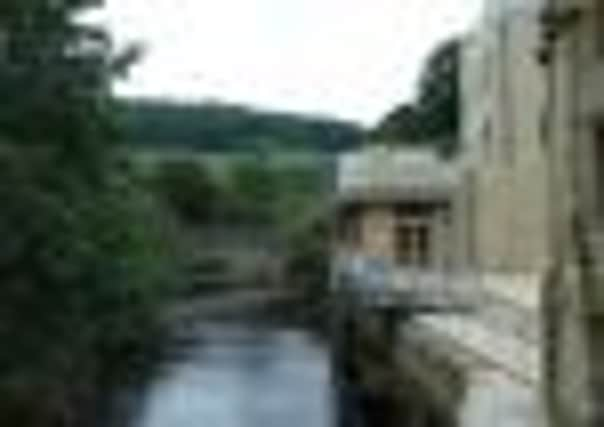Golden opportunity to improve our urban landscape


It has been a rough year for Hebden Bridge.
During the summer the town was twice flooded in a matter of weeks, leaving homes and businesses counting the costs. A few months later, after days of heavy rain, the waters began to rise again.
Those who live and work in the West Yorkshire town have become used to dealing with the after-effects of unpredictable weather. It’s an unenviable task, but amid this year’s various clean-up operations there was one small piece of good news – a brand new addition to a Hebden Bridge landmark had proved resilient to the flood waters.
Advertisement
Hide AdAdvertisement
Hide Ad“I think we all breathed a sigh of relief,” says Leeds-based architect Irena Bauman, who worked on the extension to the Hebden Bridge Town Hall. “We watched the water as it continued to rise and we watched it seep into the old part of the building. It was a real test of all the expertise which had gone into extending this historic building and I am glad to say that it passed easily.”
For Irena the work which has gone on in Hebden Bridge is also proof not only that architecture has a key part in protecting towns and cities against freak weather and climate change, but that even in an economic downturn there are opportunities to transform areas for the better.
The town hall was one of the first buildings in the country to transfer from council to community ownership. The seeds had been sowed back in 2006 and while an initial bid for Government money proved unsuccessful, those behind the Hebden Bridge Community Association refused to take no for an answer.
The transfer eventually took place in 2010 and in the last two years the association has secured £3.7m to regenerate a building which was badly in need of repair. It now boasts affordable workspace for small businesses, meeting rooms and has become a focus for the town’s arts and cultural events.
Advertisement
Hide AdAdvertisement
Hide AdIt’s a blueprint Irena believes can be replicated across Yorkshire. “There is a tendency to think that during a recession everything stops,” she says. “Certainly when the property market crashed a lot of major developments were stopped in their tracks and once-busy building sites became ghost towns overnight.
“However, the continuing economic downturn also offers possibilities. Local authorities, in particularly, are looking to cut costs and one way of doing this is to off load some of their assets.
“Many have acquired buildings over the years which are costly to run or no longer meet their current needs. They are financially draining, but by handing them over to community groups they can reduce their own expenditure while at the same time providing a hub for community enterprise.
Earlier this year Irena was appointed professor of sustainable development at Sheffield University’s school of architecture, which, in the last 18 months, has appointed two other leading female academics.
Advertisement
Hide AdAdvertisement
Hide AdIrena, along with fellow professors Fionn Stevenson and Doina Petrescu, will each give their inaugural lectures at the university this month, the talks all linked to theme of designing towns and cities fit for the demands of the 21st century.
“We have to ensure that we don’t repeat the mistakes of the past,” says Irena. “This country is facing a housing shortage, but simply relaxing the planning laws is not the answer – just look what happened in the 1980s under the Urban Development Corporations.
“Their aim was to kick start regeneration but it ended in an architectural mess. One of the areas which were scarred by those policies was Holbeck in Leeds. It was an incredibly historic area of the city with some fantastic buildings, but by the end of the decade the area was littered with giant sheds made out of sheet metal. This time we have a chance to do things differently.”
Irena points to the Low Impact Living Affordable Community Project (LILAC) which is currently taking shape in Bramley in Leeds. The development of family homes and one-bed apartments is being built from straw bales around one shared community house and those behind it are convinced it represents the future of urban living.
Advertisement
Hide AdAdvertisement
Hide Ad“Economic downturns have a habit of making people think about what is really important,” says Irena. “When it comes to town and city planning that can only be a good thing.”
The Designs on the Future lecture series will be held at Sheffield University on November 20, 27 and December 5. For more details visit www.sheffield.ac.uk/architecture